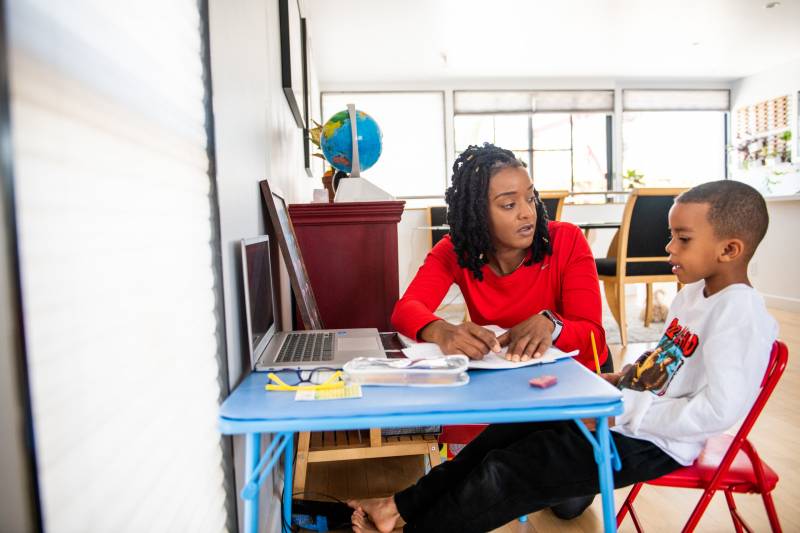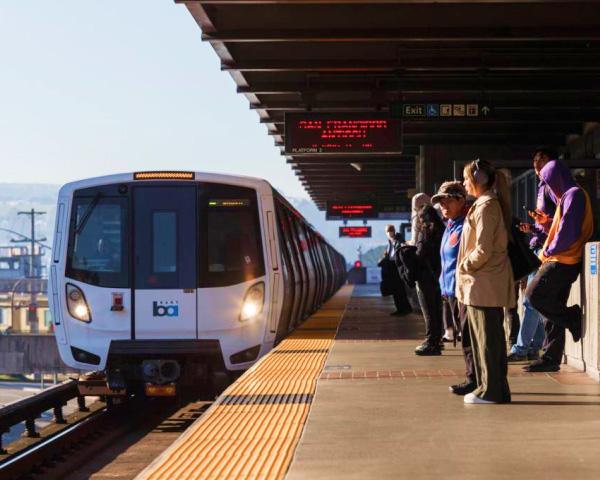“It’s just a really heavy workload outside of school,” she said. “I felt like by coming into Sojourner Truth, I’d be able to be in more control and set my own pace.”
Her family also moved to the Central Valley during the pandemic, making the logistics of finishing at Oakland High School complicated.
In some ways, Story is thriving. She’s found she learns better by reading, rather than trying to absorb information from teachers’ lectures.
“I actually am learning a lot about myself,” she said. “The teachers I have this year, they’ve been really amazing. I can tell they’re working hard to just make it the best that they can.”
Sixteen-year-old Rochelle Berdan is also doing well academically, but unlike Story, she’s struggling with the program’s approach to remote learning.
“My grades look great, but I still feel super lonely in this school,” she said. “I just don’t feel connected to any single teacher at all.”
The differences in their experiences reflect the tension between the program’s independent study roots and new requirements put in place this year by state lawmakers.
Last year, legislators allowed schools to run distance learning as an emergency alternative during the pandemic. Ahead of this school year, they limited distance learning to independent study in an effort to ensure districts fully reopened schools.
Traditionally, independent study offered an individualized alternative to classroom learning. With the pandemic dragging on, the programs have had to serve more students than ever while meeting more stringent curriculum and class time requirements newly imposed by the state Legislature.
Before COVID, the Sojourner Truth Independent Study program enrolled about 200 students, and fewer than 20 were elementary school age, according to the school’s principal, Willie Thompson. It’s now serving 1,019 students, including 450 TK through fifth graders.
As Sojourner Truth brought in new teachers to meet the demand, it has led to a mixture of teaching styles. According to students and teachers, some instructors expect students to work largely on their own, in a more traditional independent study approach, while others give lectures and lessons that mirror the kind of distance learning students experienced last year.
For Berdan and Story, this means taking some classes through an online learning platform called Apex Learning with limited teacher interaction.
“I just log in to Zoom and I’ll do my work,” Story said. “I don’t have to work with the teacher.”
Meanwhile, other classes “are like the traditional format where the teacher will do a lecture and we’ll do classwork,” she said.
Story was hoping for more independence.
“I thought I was going to be able to set my own schedule, finish classes at my own pace and have more time of my day to work and do all my volunteering,” she said.
When school started, she learned the law had changed and she’d be required to attend Zoom classes regularly. On her longest days, Story is on Zoom from 8:30 a.m. to 2:30 p.m., with breaks between classes.
“It’s almost as if they just took the traditional in-person school format and moved it online,” she said.
While Story misses the freedom of a true independent study program, Berdan wants more interaction with teachers, not less. She longs for the kind of distance learning she’d come to expect from her Oakland High teachers.
“I think you can make some room to be doing independent work, but also make time to build relationships with your students and help your students build relationships with one another,” she said.
Both Berdan and Story say they could use more social time with schoolmates. The two described classes almost entirely devoid of peer interaction. Even for students like Story, who mostly like the program, the isolation is difficult to cope with.
“I’m in my room all day doing schoolwork by myself,” Story said. “On Zoom, in class, I have students there, but it’s usually just a black screen with the name across it. I don’t really know any of the students personally. I’ve never met them before. Most of them, I don’t even know what they look like.”
For teacher Airgood, things are going better than expected given how the year began. He was told what he’d be teaching on the second day of school, when, despite his 20 years of experience teaching special education, he was assigned to middle school math and science. He’s now teaching eight classes per week.
Airgood has seen students slowly get more comfortable speaking in class, or participating via chat, and he’s impressed with the interactive teaching materials available online.
“It’s actually been quite fun,” said Airgood, who adds that he’s averaged just under 30 students in class, with four kids unaccounted for since the start of the school year.
Poor attendance is one reason Tamia Green’s 12-year-old daughter, who’s in seventh grade, is struggling in the program. Green is critical of school staff for not alerting her that her daughter had been missing class sooner. “I had no idea,” she said.
Sending her daughter back to school in person is not an option, Green said, in part because she doesn’t want her vaccinated. “I know a lot of people who got the vaccine and still got COVID,” Green said. “So why would I get something that’s not going to protect me?”
Both Story and Berdan are vaccinated, but they plan to stay in the program. Berdan often questions that decision and thinks about transferring back to Oakland High School. But neither she nor her parents feel it’s safe to return in person just yet.
“I don’t want to take that chance, especially for my family,” she said. “What’s sad about it is I feel like I’m sacrificing in order to be safe.”


